Trudy J. Morgan-Cole's Blog, page 16
October 9, 2023
The Vaster Wilds, by Lauren Groff
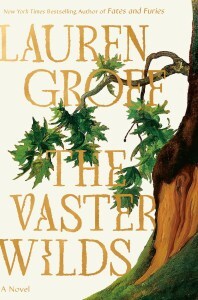
Typically, I don’t enjoy “person survives alone in the wilderness” stories (at one point I felt like the only girl of my age/generation who didn’t love Island of the Blue Dolphins). But I do love historical fiction, and given my current obsessions as a writer, I definitely love historical fiction set in and around the early 17th century English colonies in North America. So, what to do with this novel about a young girl escaping from Jamestown during the Starving Time and setting off alone into the wilderness to find a place where she can survive?
Read it in less than two days, as it turned out. Lauren Groff is a masterful writer and despite the fact that “the girl” (who is named Lamentations, although the author, writing in limited third person that sees almost everything through the main character’s eyes and memories, deviating only once from that perspective, usually refers to her just as “the girl”) is the only character for most of the book, it never felt boring, stifling, or claustrophobic to me.
Vivid descriptions of the wilderness through which the girl travels and her attempts to survive in it are interspersed with flashback scenes in which we learn about her life before leaving England, the voyage over, and the horrific conditions in Jamestown that led to her escape. Whether the action was in the past or the present, I always found it engaging and the character completely believable.
I have thoughts about the ending of this novel, but I don’t want to spoil it, so I’ll say that I had mixed feelings about whether it was the “right” ending for this book even if it wasn’t the most satisfying to me as a reader, and leave it at that. This is a novel well worth reading.
October 3, 2023
House of Odysseus, by Claire North
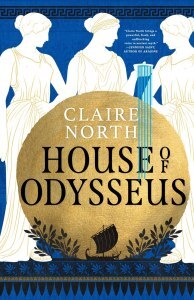
House of Odysseus brilliantly fulfills the promise of Ithaca, North’s previous novel, in retelling the story of Penelope (and, indeed, of the Trojan war and possibly all of Greek mythology) from a woman’s perspective. The first book was narrated by the goddess Hera; House of Odysseus is narrated by Aphrodite, who makes a wonderful, funny narrator and gives us the goddesses’ perspective on all these human tragedies.
For the plot of this book (Odysseus still isn’t home!) North weaves together characters and stories from Homer and the other Greek tales and myths that don’t necessarily come together in the ancient stories. Orestes and Elektra have murdered their mother, Clytemnestra, and Orestes, who should be ascending to the throne of his father Agamemnon, is drive mad by guilt, or poison, or both. They take refuge on Ithaca, where Penelope is still trying to control her unruly suitors, and are pursued by their uncle Menelaus, with his returned wife Helen in tow. Menelaus would like to kill Orestes, conquer Penelope and Ithaca, and make himself “king of kings” over all the Greek states. Penelope and her wily crowd of women spies and warriors are out to stop him. It’s a marvelous romp through legend and myth seen through women’s eyes. And since Odysseus is still on his way home, we presumably have volume 3 to look forward to ….
The Fraud, by Zadie Smith
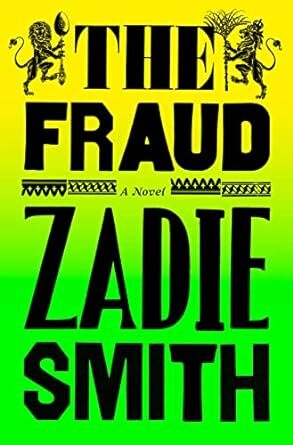
Absolute literary powerhouse Zadie Smith takes on historical fiction with a novel about a nineteenth-century legal case, a failed novelist, and a woman who, like many Victorian women, wants more from life than her society offers a woman of her station.
At the heart of the novel is the Tichborne case which fascinated 1870s England, in which an apparently working-class Englishman who had emigrated to Australia returned to England claiming to be the long-lost heir of a wealthy family. Among the many people intrigued by this case is the novel’s main character, Eliza Touchet. Eliza is the cousin of a prolific but not very successful novelist named William Harrison Ainsworth (a real 19th century writer I had never heard of, and the many summaries of Ainsworth’s books in this story make it clear why I never have). While attending the Tichborne trial with Ainsworth’s wife, Eliza is most fascinated not with “The Claimant” himself, but with one of the family servants who loyally and consistently supported his claim to be the missing heir: a Black servant original from Jamaica called Andrew Bogle.
There is, to put in mildly, a lot happening in The Fraud. There’s Eliza’s own story of genteel disappointment and frustrated ambition, a common enough one in any story about a woman in Victorian England, but it’s spiced up by memories of her sexual adventures with both Ainsworth and his first wife. There’s the up-and-down tale, told through Eliza’s eyes and almost mostly in flashbacks (lot of jumping around in the timeline here) of Ainsworth’s literary career and his feuds and jealousies with other writers (cameos by Dickens and many others). In the present-day timeline of the story, there’s the Tichborne trial itself, and the fascinating ways in which it divides English society and plays on class distinctions and resentments. Then there’s a very long section in which Eliza sits down to talk to Bogle and learn his story: the scene shifts to Jamaica and we get a whole other novel-within-the-novel about Bogle’s family and his early life — this part felt to me almost like a different book, very reminiscent of Andrea Levy’s The Long Song or Esi Edugyan’s Washington Black in its exploration of the years immediately before and after the ending of slavery in British colonies.
It’s an ambitious novel, and I’m not sure every ambition is realized — I believe the author sees threads tying all these storylines together that weren’t entirely apparent to me, and while Eliza is a great character through whose eyes watch all these stories unfolding, I was never entirely sure what Eliza herself wanted. The Tichborne Claimant is the obvious “fraud” of the title, but there’s much more playing around with ideas of fraud, identity, and selfhood as well. While I didn’t entirely feel like everything came together the way I as a reader wanted it to, reading this book was a thoroughly fascinating experience, and I can’t help but admire the vast reach and scope of Smith’s storytelling here.
September 22, 2023
The Tenant of Wildfell Hall, by Anne Bronte
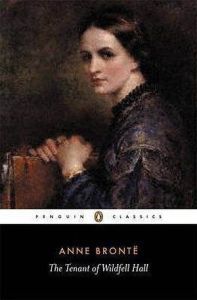
This book provoked reactions of shock and horror when it was first published in 1848; although it quickly became popular, the general feeling was that ladies shouldn’t be reading about such sordid subjects as alcoholism, abusive marriages, and infidelity. Of course, to the 21st century reader, the depiction of all these issues is quite tame and couched in the most delicate terms possible, but writing about these common societal issues in the mid-1800s was a big no-no.
What’s more surprising to me is that the author’s sisters, Charlotte and Emily Bronte, disapproved of Anne’s book, and Charlotte tried to supress its re-publication after Anne’s death. This is ironic, considering that Charlotte and Emily both wrote about immoral, cruel men and made them the romantic heroes of their most famous novels (I’ll conceded that Emily probably didn’t intend Heathcliff to be a romantic hero, but casting Heathcliff and Cathy as eternal lovers united in death does make him seem attractive even if she didn’t mean him to be; as for Mr. Rochester, honestly, the less said about that awful man the better). In Tenant, Helen’s husband Arthur is an attractive, moody, alcoholic, unfaithful, and at least emotionally if not physically abusive jerk — but he’s not the hero of the story, and the happy ending (spoiler!) is Helen finally getting free of him and marrying a much better man.
The structure of the novel made it drag a little for me — the first part, narrated by the impulsive young man Gilbert who meets Helen when she is in hiding from her husband, and makes all kinds of assumptions without knowing anything about her life — is entertaining, and fast-paced by Victorian novel standards, because Gilbert is a witty and interesting narrator. The bulk of the book is Helen’s diary, chronicling in extreme detail her marriage to Arthur and the reasons she left him. It’s possible to empathize with the terrible situation a Victorian wife like Helen is placed in, while at the same time recognizing that she’s not a great narrator or a very compelling character — to me anyway. I wanted her to get away from Arthur and live happily ever after, either with Gilbert or on her own — but I didn’t need her take quite so long telling me about it, or be quite so moralizing and preachy in the process of telling her tale.
Even so, I enjoyed this book and am glad this is another unread classic I’ve finally caught up with.
September 11, 2023
Learned by Heart, by Emma Donoghue
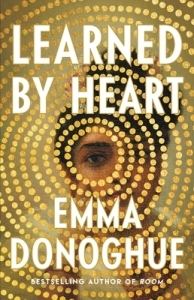
After slogging through Ramses: Son of Light, it was such a relief to immerse myself in historical fiction as it should be written: absolutely absorbing, transporting me to another time and place through the eyes of characters who feel real even as I recognize how different their world and their assumptions about it are from mine.
In this case, the characters don’t just feel real, they are real, or at least are based on real people. Eliza Raine, the teenaged protagonists of this story, was the first lover of the famous Anne Lister (of “Gentleman Jack” fame if you know her from TV), whose copious diaries and letters left posterity with plenty of information about her openly lesbian lifestyle in early 19th century England. Eliza is also a girl of mixed race, one of the many children of liaisons formed in India between Englishmen working for the East India Company, and the Indian women who were not legally wives under English law.
Sent to England with a guardian at age seven, Eliza has always been a bit of an outsider, but she’s found a place for herself at the boarding school where we find her when she’s fourteen. Her life is not thrilling, but it’s not one of grinding hardship either; she has friends, is relatively good at her schoolwork, and is in the process of carving out a small and limited place for herself in a country where her skin colour will always distinguish her as someone not fully English. Then Anne Lister arrives as Eliza’s new classmate and roommate, and everything changes.
The headlong passion of teenage love is brilliantly depicted here, as is the whole world these girls live in. The only thing I would change about this novel is the one thing an honest author of historical fiction couldn’t change, and that is Eliza’s fate. She is such a strong, vivid, brilliant character — caught up in the charm of the far more strong-willed Anne, yet with her own independent spirit — that I wanted more for her than history allows. Knowledge of the real Eliza’s fate (which we get in flash-forward scenes set ten years after Eliza’s romance with Anne) makes this book bittersweet, but it was a wonderfully immersive experience in the characters and their world.
The Breakaway, by Jennifer Weiner
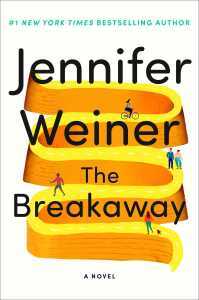
As always, I can rely on Jennifer Weiner for a quick, enjoyable, engaging read. This novel celebrates the author’s own love of bicycling through the character of Abby, a young woman in her early 30s who finds herself leading a diverse group of people on a two-week biking trip. Abby is still trying to find her place in life — she has jobs instead of a career, she hasn’t really settled on what she wants to do, she has a rocky relationship with the mother who’s spend Abby’s whole life trying to get her daughter to lose weight, and she’s in a serious relationship with her long-term boyfriend that is good but lacks the spark of that one-night stand Abby had a couple of years ago with a guy she never saw again. Biking is the one constant in Abby’s life, the one thing that’s always made her feel strong, confident, and good about herself.
You might already be able to guess that the guy from the one-night stand turns out to be one of the cyclists on the tour Abby is leading, throwing her into even more self-doubt about where she’s headed. But you likely won’t be able to guess all the other twists and turns Weiner takes the reader on as we travel with Abby and her group on a trip where almost everyone is going to discover something unexpected about themselves.
Little Fish, by Casey Plett
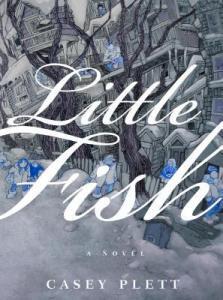
Wendy, the main character of Little Fish, is a 30-year-old transgender woman living in Winnipeg. The fact that she’s trans puts her at odds with the Mennonite community of her childhood, though she’s close to her dad, Ben, who’s not a very religious or observant Mennonite, and is a great character. Wendy’s life is pretty chaotic: she and her friends live on the margins, balancing a combination of unstable jobs, potentially dangerous sex work, mental health issues, and addictions.
The “hook” that initially pulled me into this novel is that Wendy hears a rumour that her late grandfather, a devout Mennonite farmer, might have been secretly gay or even transgender. She’s conflicted about following up on this, as doing so will send her back into a world she’s left behind. In the end, she does have one long conversation with the person who told her this, and reads one of her grandfather’s old letters — but it’s not much to go on, and I was so curious to delve deeper into the grandfather story and the impact it would have on Wendy. This is another typical case where the book is good, but the story the writer wanted to tell is not necessarily the story I was most interested in reading, and that’s no-one’s fault, just a disconnect between reader and writer.
The main thing I felt while reading this book — and this is true of a lot of literary fiction written by younger writers featuring characters in their 20s and early 30s — was just sad for the characters, because their lives seems so unhappy. (I bounced this reaction off Emma, saying “are all the young people really so sad?” and she said, “Maybe just the writers.” There might be something to that). Wendy is a great and beautifully drawn character, but I would have liked to feel more hope about her life (especially about her fairly evident alcoholism, which is a major theme but never really dealt with in the story, but I guess that’s true about a lot of people’s real lives also). I should also add as a content note that there’s a lot more graphic sexual detail in this novel than I’m personally comfortable with — again, something I find pretty frequently with literary fiction — and I know I’m a bit of a prudish reader in that way, but it’s definitely something you’d want to be aware of.
I guess the main thing I can say is that I thought this book was very good and beautifully written, but I didn’t fully enjoy the experience of reading it, because it did make me sad and a lot of the questions that arose throughout the book for me were not really answered.
September 1, 2023
Precious Little, by Camille Fouillard

How white, settler-descended Canadian writers are to write about Indigenous people in fiction (or if we are to at all) is, of course, a bit of a literary hot topic these days, with so much more awareness of cultural appropriation than we had even few decades ago (not that Indigenous people weren’t always aware of appropriation, rather that settler writers generally weren’t listening to them). How a writer like Camille Fouillard, who has extensive experience as a settler-Canadian working among Indigenous people. Fouillard has worked with the Innu in Labrador, particularly in the aftermath of the tragic fire in Davis Inlet in 1992 — the time period in which this novel is set.
Fouillard has chosen to fictionalize these real events and the Innu people of the community — as well as herself, creating the character of Anna whose professional life mirrors the author’s in many ways but whose personal life may not. What’s powerful about this beautifully-crafted novel is that it doesn’t dodge the questions of who has the right to tell an indigenous story, or whether a character like Anna is a “white savior” in Innu Labrador — rather, it foregrounds these questions, analyzes and explores them deliberately. Anna is asked to come to the community and help with developing a community-led (rather than government-led) inquiry and report about the tragedy. At every step, she has to question her place in the community, her right to be there and whether her presence is actually helping, and how what she is learning is affecting her own life. She portrays the Innu in the community in a way that feels very honest — not condescending but also not whitewashing or pretending everyone is perfect. There’s no pretense of an unbiased or unmediated depiction (which inevitably is biased and mediated through the author’s own preconceptions): rather, it’s always clear that this is Anna viewing the Innu, and herself in relation to them. It’s a powerful novel that I also found beautiful and lyrical and, despite the difficult subject matter, a pleasure to read.
Ramses: The Son of Light, by Christian Jacq (translated by Mary Feeney)
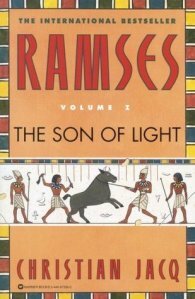
When I heard of this book, I thought, “This sounds potentially great! First in a five-book series of novels rooted in ancient Egyptian history — if the first one is good, I can really sink my teeth into this and read the whole series.” I was slightly put off by it being originally in French because I don’t read a lot of novels in translation, but I told myself to shake off that narrow-minded prejudice and enjoy a translated book.
Well, friends, I will not be reading the other four books in Jacq’s Ramses series, even though I’m such an inveterate book-finisher that I forced myself to read to the end of this one. This was not an enjoyable reading experience for me.
First: the translation thing: I found the writing in this book, particularly the dialogue, to be incredibly flat and stilted, and I honestly don’t know if that’s the writing or the translation. I’m all for writing that is lucid and clear without too many fancy tricks, but there’s absolutely no sense of beauty, or even care taken, with the language at all in this book.
The rest of my quibbles with it have to do with my thoughts on historical fiction, which, as it’s a genre I both read and write, I have many opinions about.
Christian Jacq is an Egyptologist with a doctorate in Egyptian studies and a great admiration for Ramses II. So he obviously knows the period, and any deviations he makes from history in this fictional treatment are deliberate, not the result of ignorance. OK. I am fine with historical novels changing, adding to, or subtracting from known history — that’s why it’s fiction. And in writing about an era where most of the evidence is archeological and there are huge gaps in what we know, creative writers have to make some leaps to fill in those gaps. But I’m always interested in the reasons why writers change history and in this case I cannot understand some of Jacq’s choices.
He leaves out interesting things about Ramses’ background — for example, the fact that his grandfather was not royal, so he didn’t come from a long line of pharaohs. He invents others — there doesn’t seem to be any evidence of a power struggle or other sons of Seti who challenged Ramses’ right to the throne, but in this novel there is a fictional older brother named Shanaar, and Shanaar’s machinations to take the throne are among the major plot points in the novel.
One of Jacq’s most controversial authorial choices actually didn’t bother me — he brings the mythological world of the Greek Iliad and Odyssey into the historical world of Ramses’s Egypt, with Homer, Menelaus, and Helen stopping by Egypt for awhile. Not only is this mixing history with myth/fiction, but even if the Homeric epics were historical fact, they’re the wrong period entirely. And yet I found this an interesting and acceptable leap because I enjoyed the idea of Greek and Egyptian culture rubbing shoulders in this way, even if it wasn’t historically credible. I could at least see why he was doing it, and it’s such a big leap that it pretty much demands you suspend disbelief.
Back to things I didn’t like: the handling of women in the story. We know historically that Nefertari and Isetnotfret were two of Ramses’ wives, and I’m fine with an author filling in the blanks on those relationships and the extent to which either of them might have been a love match. That’s what you do in historical fiction. But the way in which the women’s stories are handled is indicative of the way this Egyptologist writer is unable to translate his knowledge of the period into interesting story material.
For example: Iset the Fair pursues Ramses from the time they are young teenagers, flaunting her sexuality and getting him into bed as quickly as possible. OK, that’s interesting. But we have no sense of the larger context of her actions in terms of how women of her class (what even is her social class? it’s unclear, though she seems to be considered as a possible bride for both princes, so presumably her family are wealthy and/or of noble blood) were expected to behave, how female sexuality was viewed in that culture, etc. We don’t know who her parents are or how they view their daughter hopping into bed with the pharaoh’s son at every opportunity. I’m not saying the characters shouldn’t have sex — I’m saying the sex they have needs some context in terms of the norms and behavior of that culture. Is Iset a rebel? A floozy? A girl behaving perfectly normally for her place and time? Does anyone in the book, including Ramses and Iset herself, have any opinions about any of this? (No).
And this goes beyond women, sex, and marriage to permeate the whole novel – random details about ancient Egypt are dropped into the story like raisins into tea buns, but there’s no sense of these details being part of an overall tapestry that tells us how people think, behave, believe, eat, work, love, marry, and live in this time and place.
Ironically for a novel written by someone who appears to be an expert in the field, this may be one of the least satisfying historical novels I’ve ever read. I will not be picking up the next book.
Everyone in My Family Has Killed Someone
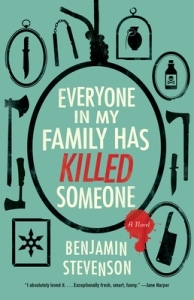
This mystery novel delivers what the title promises. As the Cunningham family gathers for spectacularly awkward family reunion in a remote Australian ski resort, we learn via our narrator, the family black sheep Ernest, that everyone in the family has, one way or another, killed someone (not always intentionally). Who has killed whom, and why, and what implications that has for the stranger found dead on the resort grounds just as the Cunningham’s arrive — all of that is what forms the plot of this wonderfully twisty novel. The backstory of the Cunningham’s unfolds in flashback after flashback as we see how the events of the past have influenced the tragedies of the present.
I always find tone difficult in mysteries — the light-heartedness of many mysteries doesn’t sit well with the seriousness of the crimes, and this felt true here too. But I still enjoyed the ride, because Ernest is such a great narrator and I loved his device of telling the reader up front about the rules of detective fiction and how exactly he proposed to follow them. So despite the fact that I didn’t find all the family members and their situations believable from an emotional point of view, I did enjoy the experience of reading the book and would likely read his next too, since there’s a sequel out and it looks like it may be the beginning of a series.



